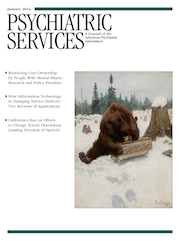Use of Health Care Services Before and After a Natural Disaster Among Survivors With and Without PTSD
Abstract
Objective
This study used a questionnaire to identify individuals who met criteria for posttraumatic stress disorder (PTSD) ten months after surviving a disaster and compared their use of health care services before and after the disaster with that of survivors who did not meet criteria for PTSD.
Methods
Ten months after the December 26, 2004, Southeast Asian tsunami, Danish tourists who had been in areas exposed to the disaster were mailed a questionnaire asking about demographic characteristics and exposure to the tsunami. The questionnaire included the PTSD Checklist, which measures symptoms of posttraumatic stress. Individuals who met DSM-IV PTSD criterion A1—in this case, being caught, touched, or chased by the waves or having witnessed the death, serious injury, or suffering of others—were included in the analyses (N=635). The Danish National Health Service Register provided longitudinal data on annual number of contacts with health care services before (2002–2004) and after (2005–2007) the tsunami.
Results
Survivors with PTSD or partial PTSD used health care services more than survivors without PTSD before and after the tsunami. The severity of posttraumatic stress symptoms was positively correlated with postdisaster use of health care services. However, when adjusted for predisaster health care use, this association was not significant.
Conclusions
Postdisaster health care service utilization was predicted by predisaster health care service utilization and was hardly affected by the onset of PTSD itself. Associations between PTSD and subsequent health problems must be interpreted with caution.



